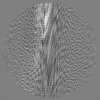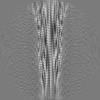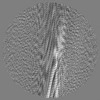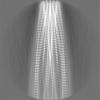登録情報 データベース : EMDB / ID : EMD-46422タイトル Type Ic amyloid-beta 42 filaments in dominantly inherited Alzheimer disease with cotton wool plaques 組織 : Type Ic amyloid-beta 42タンパク質・ペプチド : Amyloid-beta protein 42 / / / / 機能・相同性 分子機能 ドメイン・相同性 構成要素
/ / / / / / / / / / / / / / / / / / / / / / / / / / / / / / / / / / / / / / / / / / / / / / / / / / / / / / / / / / / / / / / / / / / / / / / / / / / / / / / / / / / / / / / / / / / / / / / / / / / / / / / / / / / / / / / / / / / / / / / / / / / / / / / / / / / / / / / / / / / / / / / / / / / 生物種 Homo sapiens (ヒト)手法 / / 解像度 : 2.6 Å Hoq MR / Vago FS / Ozcan KA / Bharath SR 資金援助 Organization Grant number 国 National Institutes of Health/National Institute of Neurological Disorders and Stroke (NIH/NINDS) 5U01 NS1104377 National Institutes of Health/National Institute on Aging (NIH/NIA) 1RF1 AG071177
ジャーナル : Acta Neuropathol / 年 : 2024タイトル : Cryo-EM structures of cotton wool plaques' amyloid β and of tau filaments in dominantly inherited Alzheimer disease.著者 : Md Rejaul Hoq / Anllely Fernandez / Frank S Vago / Grace I Hallinan / Sakshibeedu R Bharath / Daoyi Li / Kadir A Ozcan / Holly J Garringer / Wen Jiang / Ruben Vidal / Bernardino Ghetti / 要旨 : Cotton wool plaques (CWPs) have been described as features of the neuropathologic phenotype of dominantly inherited Alzheimer disease (DIAD) caused by some missense and deletion mutations in the ... Cotton wool plaques (CWPs) have been described as features of the neuropathologic phenotype of dominantly inherited Alzheimer disease (DIAD) caused by some missense and deletion mutations in the presenilin 1 (PSEN1) gene. CWPs are round, eosinophilic amyloid-β (Aβ) plaques that lack an amyloid core and are recognizable, but not fluorescent, in Thioflavin S (ThS) preparations. Amino-terminally truncated and post-translationally modified Aβ peptide species are the main component of CWPs. Tau immunopositive neurites may be present in CWPs. In addition, neurofibrillary tangles coexist with CWPs. Herein, we report the structure of Aβ and tau filaments isolated from brain tissue of individuals affected by DIAD caused by the PSEN1 V261I and A431E mutations, with the CWP neuropathologic phenotype. CWPs are predominantly composed of type I Aβ filaments present in two novel arrangements, type Ic and type Id; additionally, CWPs contain type I and type Ib Aβ filaments. Tau filaments have the AD fold, which has been previously reported in sporadic AD and DIAD. The formation of type Ic and type Id Aβ filaments may be the basis for the phenotype of CWPs. Our data are relevant for the development of PET imaging methodologies to best detect CWPs in DIAD. 履歴 登録 2024年8月5日 - ヘッダ(付随情報) 公開 2024年10月2日 - マップ公開 2024年10月2日 - 更新 2024年10月2日 - 現状 2024年10月2日 処理サイト : RCSB / 状態 : 公開
すべて表示 表示を減らす
 データを開く
データを開く 基本情報
基本情報
 マップデータ
マップデータ 試料
試料 キーワード
キーワード 機能・相同性情報
機能・相同性情報 Homo sapiens (ヒト)
Homo sapiens (ヒト) データ登録者
データ登録者 米国, 2件
米国, 2件  引用
引用 ジャーナル: Acta Neuropathol / 年: 2024
ジャーナル: Acta Neuropathol / 年: 2024
 構造の表示
構造の表示 ダウンロードとリンク
ダウンロードとリンク emd_46422.map.gz
emd_46422.map.gz EMDBマップデータ形式
EMDBマップデータ形式 emd-46422-v30.xml
emd-46422-v30.xml emd-46422.xml
emd-46422.xml EMDBヘッダ
EMDBヘッダ emd_46422_fsc.xml
emd_46422_fsc.xml FSCデータファイル
FSCデータファイル emd_46422.png
emd_46422.png emd_46422_msk_1.map
emd_46422_msk_1.map マスクマップ
マスクマップ emd-46422.cif.gz
emd-46422.cif.gz emd_46422_half_map_1.map.gz
emd_46422_half_map_1.map.gz emd_46422_half_map_2.map.gz
emd_46422_half_map_2.map.gz http://ftp.pdbj.org/pub/emdb/structures/EMD-46422
http://ftp.pdbj.org/pub/emdb/structures/EMD-46422 ftp://ftp.pdbj.org/pub/emdb/structures/EMD-46422
ftp://ftp.pdbj.org/pub/emdb/structures/EMD-46422 emd_46422_validation.pdf.gz
emd_46422_validation.pdf.gz EMDB検証レポート
EMDB検証レポート emd_46422_full_validation.pdf.gz
emd_46422_full_validation.pdf.gz emd_46422_validation.xml.gz
emd_46422_validation.xml.gz emd_46422_validation.cif.gz
emd_46422_validation.cif.gz https://ftp.pdbj.org/pub/emdb/validation_reports/EMD-46422
https://ftp.pdbj.org/pub/emdb/validation_reports/EMD-46422 ftp://ftp.pdbj.org/pub/emdb/validation_reports/EMD-46422
ftp://ftp.pdbj.org/pub/emdb/validation_reports/EMD-46422 リンク
リンク EMDB (EBI/PDBe) /
EMDB (EBI/PDBe) /  EMDataResource
EMDataResource マップ
マップ ダウンロード / ファイル: emd_46422.map.gz / 形式: CCP4 / 大きさ: 83.7 MB / タイプ: IMAGE STORED AS FLOATING POINT NUMBER (4 BYTES)
ダウンロード / ファイル: emd_46422.map.gz / 形式: CCP4 / 大きさ: 83.7 MB / タイプ: IMAGE STORED AS FLOATING POINT NUMBER (4 BYTES) emd_46422_msk_1.map
emd_46422_msk_1.map 試料の構成要素
試料の構成要素 Homo sapiens (ヒト)
Homo sapiens (ヒト) Homo sapiens (ヒト)
Homo sapiens (ヒト) 解析
解析 試料調製
試料調製 電子顕微鏡法
電子顕微鏡法 FIELD EMISSION GUN
FIELD EMISSION GUN
 画像解析
画像解析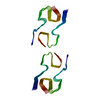
 ムービー
ムービー コントローラー
コントローラー









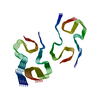









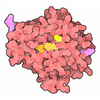
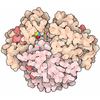
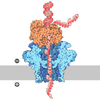



 Z (Sec.)
Z (Sec.) Y (Row.)
Y (Row.) X (Col.)
X (Col.)








